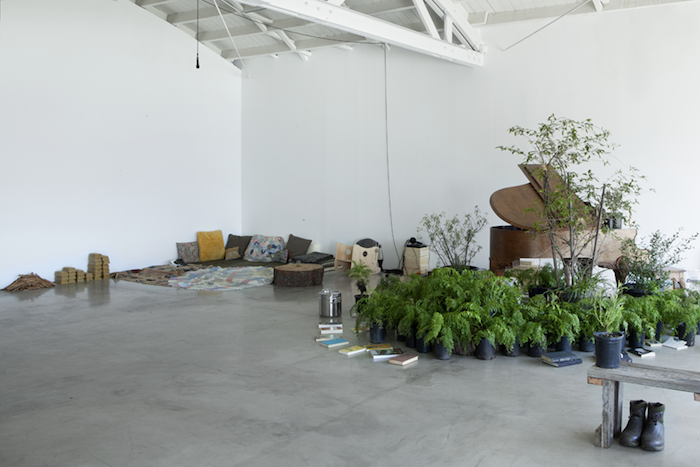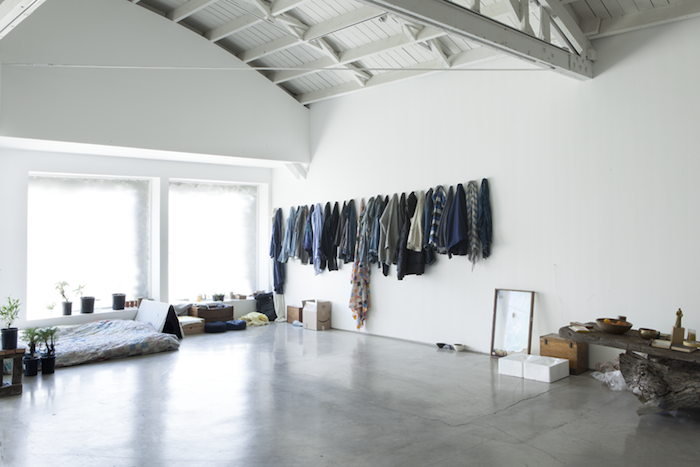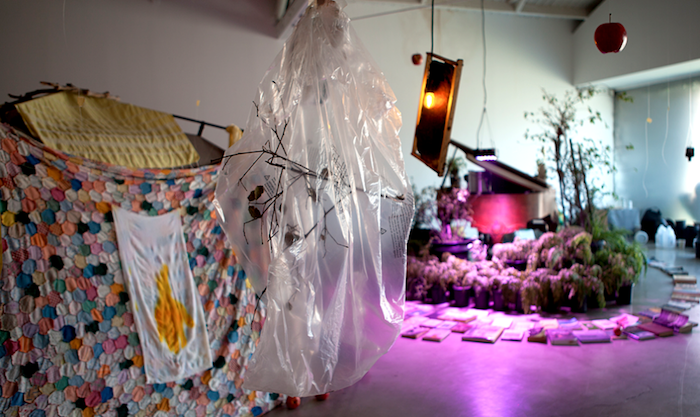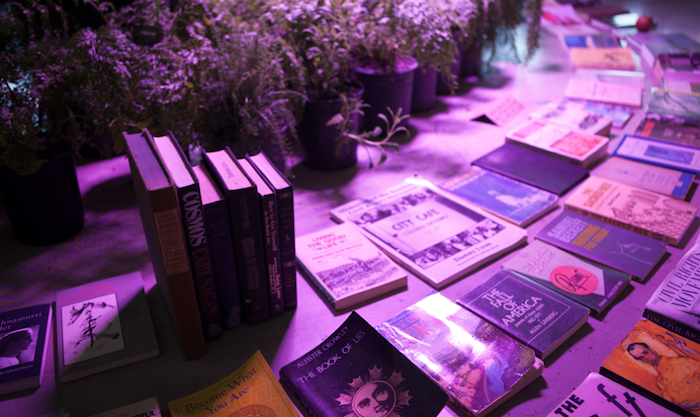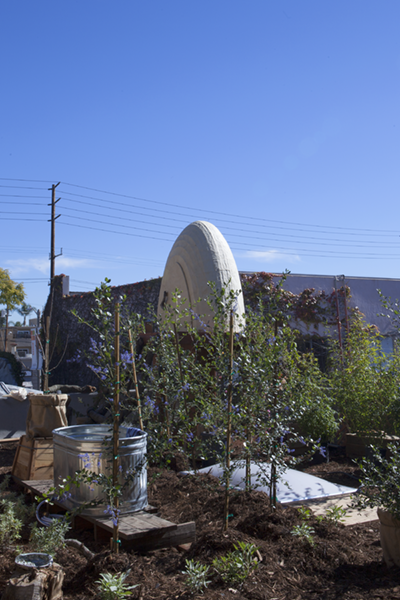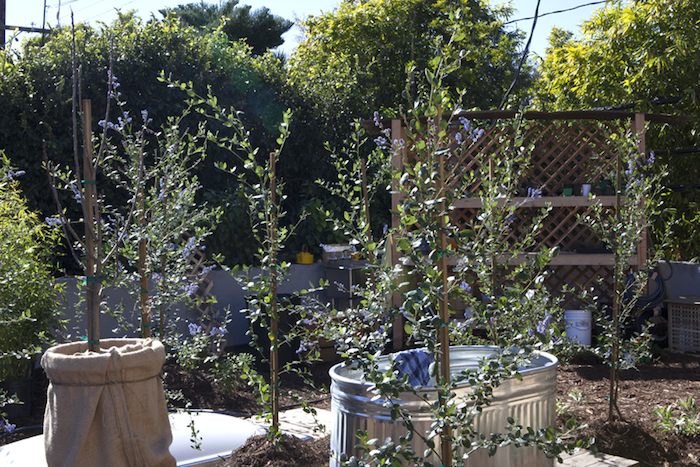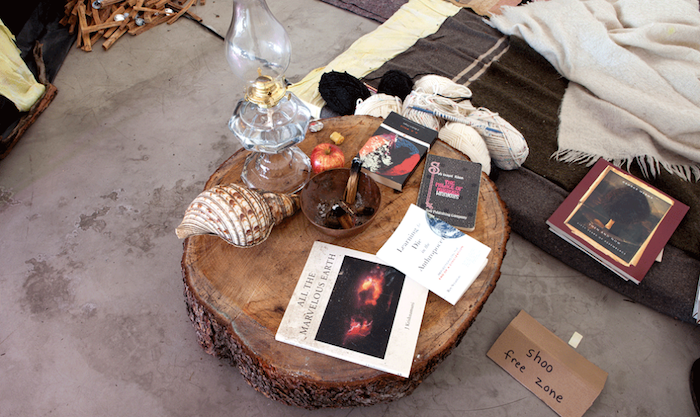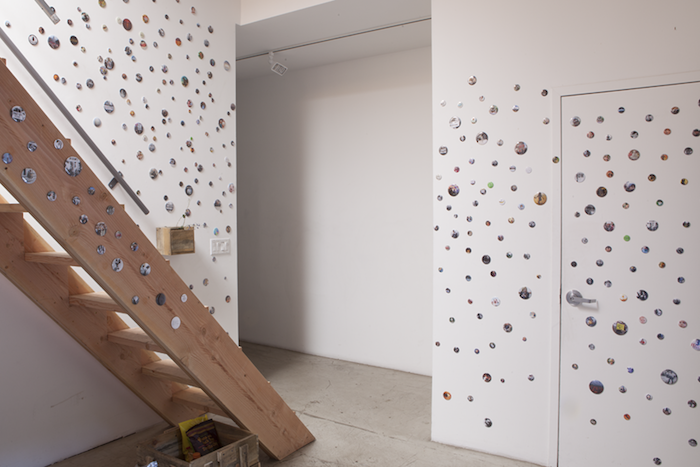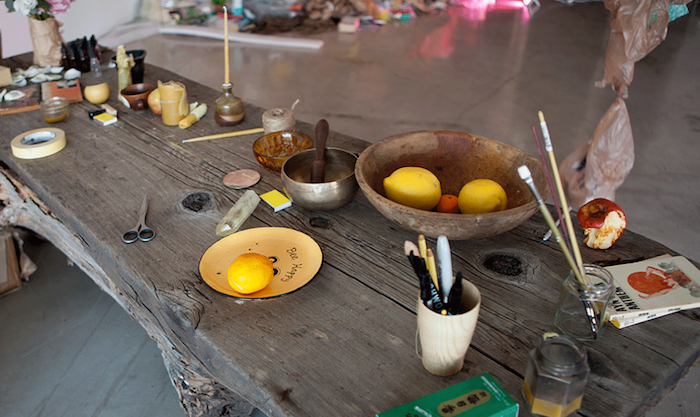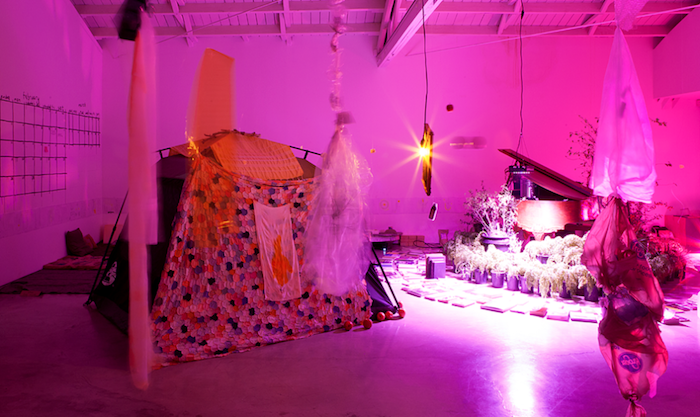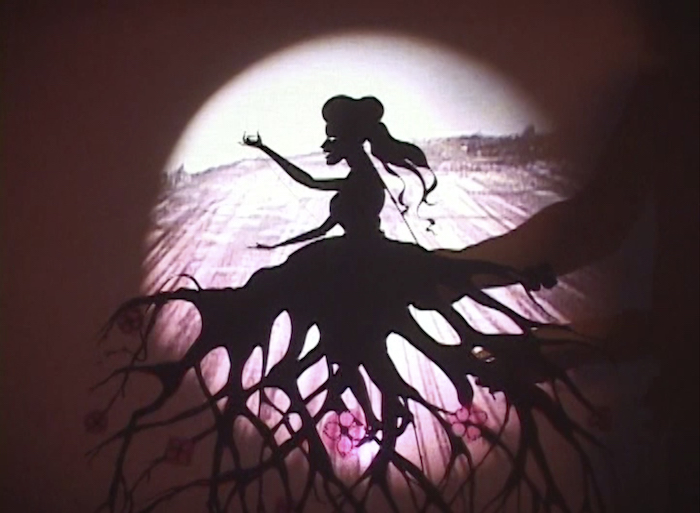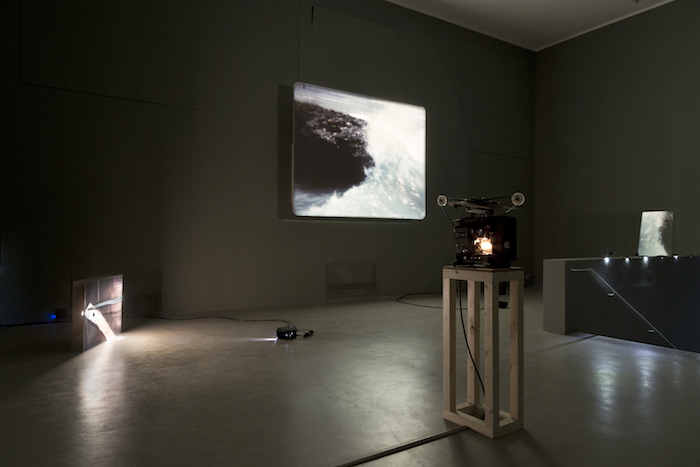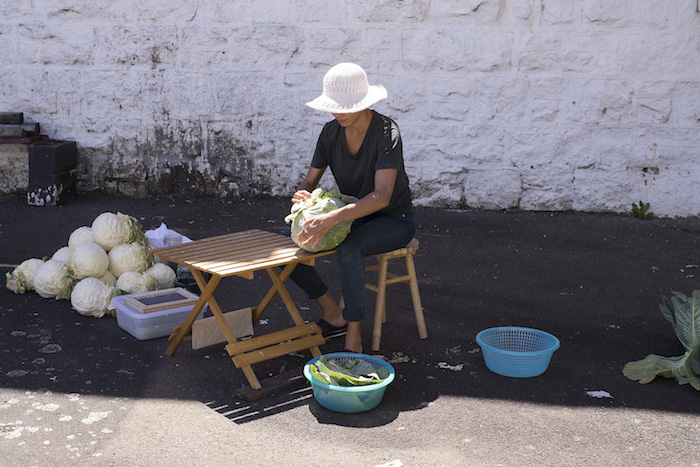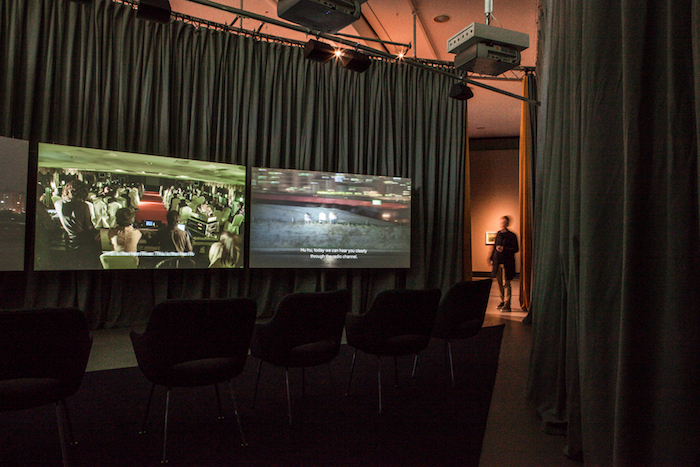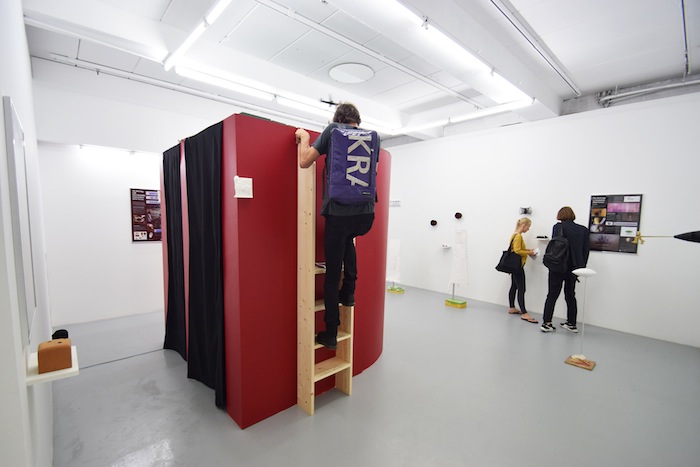January 28–March 11, 2017
Over the decade and a half of his career to date, Terence Koh has generated so many myths that it is now nearly impossible to begin thinking about his work without first acknowledging the tales of his personal and professional decadence in New York during the pre-crash mid-aughts, or the story of his apparent atonement when he faded from hypervisibility following his 2011 show “nothingtoodoo” at Mary Boone, New York, retreating with his partner to a mountaintop in the Catskills. The legend is threadbare from retelling; you’re at a computer—if you don’t already know it, Google him. Better, instead, to start with some facts about Terence Koh in 2017.
On the roof of Moran Bondaroff gallery in West Hollywood, Koh has built a beehive with a door big enough for humans to crawl inside. Above a mesh screen, teeming live bees build honeycomb between wooden slats. The hive—titled bee chapel (2017), the third he has made after a prototype in the Catskills and a version for his 2016 exhibition at Andrew Edlin Gallery, New York—stands on a rustic wooden platform perhaps six feet high, beside a temporary rooftop garden. Lavenders, sages, yarrow, fruit trees, leaf vegetables, and herbs grow in pots, surrounded by bark chippings. There is a compost toilet and a galvanized steel tub, which Koh fills with a hose and uses as his bath, because for the six-week duration of the exhibition, he is living in the gallery downstairs.
A letter from Koh to his deceased cat serves as a press release. In his idiosyncratic spelling, Koh says he intends to “tune myself with the vibration of the universe. […] i want too bee wilder like yoo. a wilder human.” He pledges not to set foot outside the gallery, subsisting only on food donated by visitors. “i wont spend any money, look at the news, check email, touch a cellphone or poop in a flush toilet.” All his electricity comes from solar panels on the roof.
The gallery itself smells strongly of incense and beeswax, and Tibetan bells jangle on the door. In one corner, a mattress has a patchwork blanket thrown over it, and pegs display Koh’s denim-heavy wardrobe. (He no longer dresses exclusively in white.) In another corner, a sitting area has cushions scattered about, and a couple of low tables made from tree trunks. A baby grand piano stands surrounded by potted plants, with a cooking pot placed on the strings beneath its lid; unlike the bed and the tables, this assemblage is a work titled the whole earth (2017). On the music stand—ironically? unironically?—rests a book by Joseph Campbell called The Power of Myth (1989).
All around are plants, and books: books about beekeeping, books about self-sufficiency and environmentalism, books about comparative religion and meditation, books about cosmology, a fall 1970 edition of The Whole Earth Catalog, Henry David Thoreau’s Walden (1854), a book on Black Mountain College. Books are easy signifiers of intellectual context, even if they remain unread. When I asked Koh why Ayn Rand’s Anthem (1938) featured so prominently in the show (not only in bound form but also used as a sculptural and culinary material, its pages dipped in honey and baked to a crisp, apparently meant for snacking), he simply said he had heard that the Republicans were reading Rand. And that he chose that novel because of its last line: “The sacred word: EGO.”
Beyond these fundamentals, facts become elusive. There is no official checklist for the exhibition, because during its course Koh will create new works, and perhaps destroy others. On my second visit, the preserved corpse of a yellow canary was in pieces on the gallery floor after having been mauled by the artist’s other cat. Koh—who seems happy to talk with visitors—declared the result an even more perfect emblem of our current political moment. Elsewhere, he had hung objects including empty juice bottles and a half-eaten apple on monofilament from the ceiling. He said he did not yet know if these were artworks, and that he was just experimenting with ways of dealing with his trash. He was also building a chicken-wire cavity wall that he said he intended to fill with garbage; he called it “the good wall.”
The bagginess of Koh’s process, the opacity of his aims, and the intuitive way in which he appears to make decisions, all make “sleeping in a beam of sunlight” a challenging exhibition to parse. For some, perhaps, they make it easy to dismiss. A great deal of the exhibition’s credibility depends on one’s willingness to subscribe to the mythos of the artist. To his acolytes, Koh is a pure force, something between a monk and a shaman. To his cynics (with whom, I admit, I reluctantly have more sympathy) he is an incorrigible showman. After all, to what extent can Koh’s project be considered a gesture of asceticism when he is putting himself on display in a city that thrives on self-publicity?
Most damningly of all, the exhibition implicates Koh as a dilettante, uncritically assuming the accoutrements of 1960s radical environmentalism without making a case for their relevance in our embattled contemporary moment. Especially in California, cold-pressed juice, Tibetan bells, and incense are clichés that have been wholly absorbed and marketed by a reactionary lifestyle aesthetic; now they are convenient, though inert, signifiers of a progressive worldview that might once, long ago, have had its roots in protest. Withdrawal as a form of resistance may have precedents from Lee Lozano to Yoko Ono to Tehching Hsieh, but in the age of Trump, the strategy seems like a luxurious indulgence.
